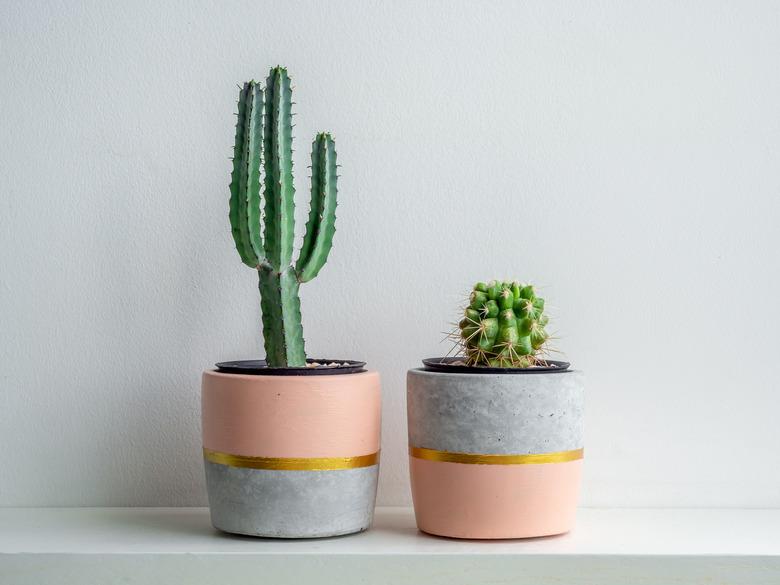How To Get Rid Of Cactus Fungus
Cacti (family Cactaceae) are popular plants for many gardeners thanks to the wide variety available and their low maintenance requirements. This doesn't mean cacti are totally free of problems, however. For instance, fungal infections are a common issue that many cacti face. Knowing how to get rid of cactus fungus can help you keep your plants healthy and possibly prevent the spread of disease to other plants.
Cactus Fungus Overview
Almost every plant can fall prey to fungal issues, and a variety of fungi can adversely affect cacti. Initially, a fungal infection may cause what appears to be superficial damage to a cactus, but if left untreated, the fungus may take over, causing the plant to die. There are some fungal pathogens that live primarily in the soil, meaning they can be difficult to spot. These pathogens attack cactus roots and crowns, typically resulting in the end for a plant.
However, there are some fungal problems that can be halted, if caught in time. If your cactus develops a fungus problem, you may first notice pale water spots or other discolorations on the surface of your plant. As the fungus worsens, you may notice more-pronounced lesions. Different infections may vary in color and general appearance.
Common Cactus Fungal Diseases
It helps to be familiar with a few common types of fungal diseases to look out for on your cactus, as identifying an infection early is important to knowing whether it can be treated and possibly saving your plant.
- Dry rot (Phyllosticta concava and
Mycosphaerella spp.) tends to manifest as black spots and lesions on the surface of a plant. - Soft rot (Helminthosporium spp.) is identified by darker, sunken patches around the crown of a cactus.
- Cactus anthracnose (Colletotrichum spp.) appears as a light-brown surface rot with raised pink pustules.
- Charcoal spot (Stevensea wrightii) produces dark spots, often surrounded by small raised dots in a circular formation.
- Sunscald (Hendersonia opuntiae)causes a large, reddish-brown patch with a grayish-brown, cracked center.
- Cotton root rot (Phymatotrichum omnivorum)is visible only as brown strands on the surface of a plant's roots, making it more difficult to identify.
How to Get Rid of Cactus Fungus
The key to treating a fungal infection on your cactus is spotting the issue early. This means inspecting your cactus often to ensure you'll notice as soon as possible if there's anything amiss.
Some cactus fungi, like soft rot, can be treated, and your cactus restored. If you manage to catch the infection quickly enough, you can spray your cactus with a copper fungicide, applying it directly to surface cuts or openings according to the product's instructions.
For other cactus fungi, like cactus anthracnose, it may be necessary to cut out the affected area. Put on cut-resistant gloves and use a sterile knife, whose blade has been dipped in rubbing alcohol, to cut around the infected area. When excising the lesion, cut beyond its margins into healthy tissue to help ensure you've fully removed the infection; then throw away the removed part. Keep the cut area dry for several days until it forms a callus. A copper fungicide can help stop cactus anthracnose from spreading.
There are some cactus fungi, however, that can't be successfully treated. Cacti infected with dry rot, cotton root root, sunscald and charcoal spot, for example, should be completely removed and destroyed.
Preventing Fungal Infections
Fungal pathogens often enter a cactus via a cut or injury, so avoid wounding your plant if possible. If you decide to take a cutting to clone your cactus, stave off infection by dipping the blades of your cutting tool in rubbing alcohol between cuts, in addition to dusting all cut surfaces with sulfur and allowing the tender tissue inside to form a callus before planting the cutting.
You must also provide cacti with the specific environmental conditions they need to stay healthy. Most arid-climate cacti require a lot of light and mild to warm temperatures, in addition to a well-draining potting mix or landscape mix and occasional feedings.
Feed your cactus no more than twice a year and only during the spring-summer growing season using a high-phosphorus product diluted to half the rate suggested on the product label. Because good drainage is critical to preventing your plant's roots from becoming waterlogged and more susceptible to fungal infections, choose an appropriately sized pot with holes in the base and avoid overwatering. If growing your cactus in the landscape, consider planting it in a raised bed to improve drainage.
For cactus houseplants, allow the potting mix to dry out during the winter and water your cactus every two weeks or once a month, applying only enough water to get some moisture to the roots. During the growing season, water deeply when the potting mix is dry, allowing excess water to drain and dumping any water that collects in the tray or saucer the pot is sitting in.
References
- Clemson Cooperative Extension: Indoor Cacti
- Ohio State University Extension: Succulents
- Texas A&M Agrilife Extension: Cacti and Succulents
- Purdue University Extension: Using Organic Fungicides
- University of Arizona Cooperative Extension: Cactus, Agave, Yucca and Ocotillo
- University of Vermont Department of Plant and Soil Science: Growing Cacti Indoors
- University of Minnesota Extension: Cacti and Succulents
